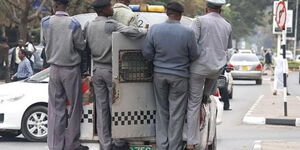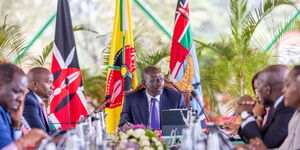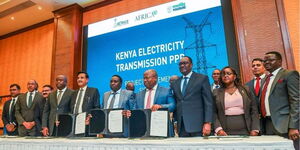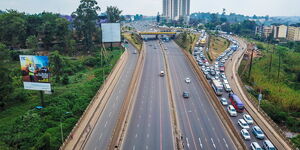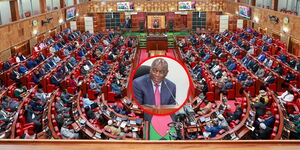President William Ruto has announced plans to shut down a power plant in northern Kenya within a year as the government seeks to transition to sustainable renewable energy sources.
Speaking during the contract signing for improved electricity access via mini-grids and solar in Nairobi, Ruto revealed that plans were underway to shut down a diesel-powered grid in Lodwar as part of the government's commitment to achieving a 100 per cent clean energy grid.
According to Ruto, the government has already initiated plans to hybridise diesel with a solar photovoltaic (PV) system, and preparations are underway to install eight megawatts of solar power in the northern regions of the country, which experience prolonged sunny spells.
A diesel-powered grid in Lodwar, Turkana County, is also set to be phased out as the government intensifies efforts to replace diesel with solar-powered energy sources.
"In Lodwar, we are taking a bold and decisive step to shut down the diesel power plant and extend the power grid to Lodwar by next year," the President said, adding, "I am looking forward to that proud moment when I switch off the diesel power plant in Lodwar for the first time."
Running an off-grid power station on diesel is quite expensive. A recent report by Kenya Power revealed that an estimated 2.22 million litres of diesel are required to run 30 off-grid power stations for a month.
This equates to 22.64 million litres of diesel per year, costing upwards of KSh 4.31 billion annually to power off-grid stations.
Ruto also revealed that the government would embark on a KSh 900 million project to construct 100 kilometres of 66-kilovolt power lines and a substation in northern Kenya in a bid to reduce dependence on costly diesel power and cut energy costs.
The government's projection is that Kenya will have a 100 per cent clean energy grid by 2030.
In 2019, the Ministry of Energy launched the Kenya Off-Grid Solar Access Project (KOSAP), targeting 14 counties: West Pokot, Isiolo, Marsabit, Samburu, Mandera, Wajir, Lamu, Tana River, Kilifi, Narok, Taita-Taveta, Turkana, Garissa, and Kwale.
Thanks to funding from the World Bank, the project aimed to deliver renewable energy to 430,000 households at an estimated cost of KSh 16 billion (approximately USD 150 million).
Among the main initiatives under KOSAP is the deployment of solar home systems, with more than 1.5 million households expected to benefit from mini-grids that will provide sustainable energy solutions to Kenya's off-grid regions.
On Wednesday, the President also announced that six contracts would be signed to connect 343 public facilities and schools to solar power at a cost of KSh 436 million.
“Additionally, six contracts will ensure that 343 public health facilities, schools, and administrative offices are connected to electricity through stand-alone solar systems at a cost of KSh 438 million. A further 316 solar water pumps for boreholes, worth KSh 1.6 billion, are in the final stages of procurement, ensuring that electricity not only lights homes but also powers essential services,” Ruto said.




